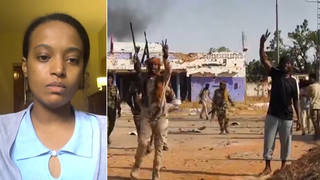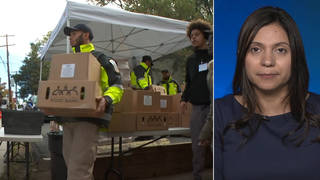And Tom Hayden, who spent decades shaping movements against war and for social justice, has died at the age of 76. Hayden was the principal author of the Port Huron Statement, the founding document of Students for a Democratic Society, or SDS. The statement advocated for participatory democracy and helped launch the student movement of the 1960s. In 1968, Hayden became one of the so-called Chicago 8 and was convicted of crossing state lines to start a riot after he helped organize protests against the Vietnam War outside the Democratic National Convention. Speaking to Democracy Now! last year, Hayden described the extraordinary growth of the antiwar movement he helped lead during the 1960s.
Tom Hayden: “The first march in April 1965 was called by SDS, which was then a small campus network that had been based on civil rights and student power. And we were surprised that 25,000 people came. That was then the largest antiwar march in American history, according to historians. Within three or four years, you would have half a million marching on both coasts, so a million, not once, but several times a year. You would have a revolt in the armed forces by GIs who were throwing medals over the White House fence and who were in mutiny. You would have 4 million students caught up in protests shutting down whole campuses by the spring of 1970.”










